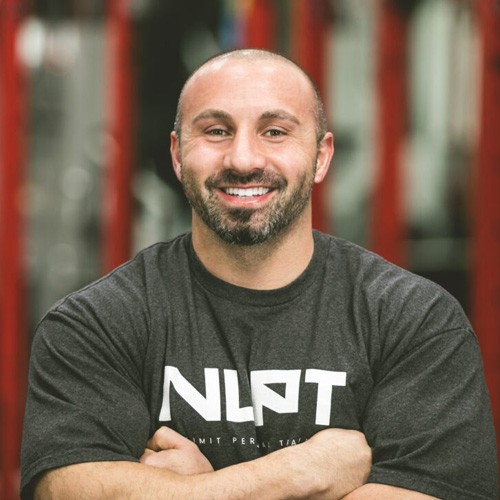Optimize Your Results: a Personal Fitness Instructors Role in Creating Effective Programs and Diverse Activities for every single Physical Fitness Level
a Personal fitness instructor plays a necessary function in taking full advantage of fitness outcomes through customized program style. By assessing private goals and limitations, instructors can create efficient, customized workout strategies. They also incorporate a range of workouts to keep engagement and interest. Tracking development and readjusting routines based on comments are essential for success. But how do these aspects integrate to promote actual improvement? The answer hinges on the thorough techniques utilized by instructors.
Comprehending Private Goals and Limitations
Just how can personal fitness instructors efficiently customize programs to fulfill varied customer requirements? Comprehending private goals and restrictions is important for personal trainers aiming to optimize their customers' physical fitness journeys. Each client offers special aspirations, whether it be weight loss, muscle gain, or improved athletic performance. A comprehensive assessment of a client's physical abilities, clinical background, and way of living aspects is vital.
Trainers have to likewise take into consideration mental facets, such as inspiration degrees and personal preferences, which can substantially affect adherence to a health and fitness program. By participating in open communication, fitness instructors can uncover certain goals and identify possible obstacles to advance.

Developing Personalized Workout Strategies
Creating tailored workout plans needs a complete understanding of each client's one-of-a-kind account, formed by their private objectives and constraints. Individual instructors start this procedure by performing detailed assessments, that include assessing fitness degrees, case history, and personal preferences. This extensive analysis informs the design of customized programs that straighten with the customer's ambitions, whether they go for fat burning, muscular tissue gain, or boosted athletic performance.
Trainers have to additionally consider factors such as age, experience, and any kind of pre-existing injuries, making certain that the exercise plans are both effective and secure. By integrating specific workouts that target appropriate muscle teams and power systems, trainers can optimize outcomes. Additionally, individual fitness instructors on a regular basis keep track of progress and readjust plans as necessary, cultivating versatility to meet advancing requirements. Ultimately, the development of personalized workout strategies is a collaborative initiative that equips customers while maximizing their possibility for success in achieving health and fitness goals.
Including Range to Maintain Workouts Engaging
What techniques can individual trainers employ to ensure that workouts continue to be enjoyable and revitalizing for their customers? One effective strategy is integrating a selection of exercises that target different muscular tissue groups and physical fitness parts. By rotating between toughness training, cardiovascular workouts, and flexibility exercises, trainers can stop uniformity. Additionally, presenting brand-new equipment, such as resistance bands, kettlebells, or stability spheres, can rejuvenate regimens and challenge customers in unique ways.
One more technique is to incorporate functional movements and sports-specific drills, which can raise engagement by aligning workouts with customers' rate of interests - No Limit Personal Training. Outside workouts or team courses can also from this source enhance the experience, fostering a sense of community and motivation. Personal fitness instructors might consider setting themed exercise days or incorporating gamification elements to more increase excitement. By keeping a vibrant and differed exercise regimen, fitness instructors can assist clients stay committed to their physical fitness journey, eventually bring about boosted outcomes and satisfaction
Monitoring Progress and Making Adjustments
Efficient surveillance of progression and making essential modifications are vital for individual fitness instructors to guarantee their clients attain their fitness objectives. This procedure begins with developing clear, quantifiable objectives tailored per customer's distinct requirements. Routine evaluations, such as fitness examinations and development tracking, make it possible for fitness instructors to assess effectiveness and recognize areas click here for more requiring alteration.
Personal instructors must utilize numerous methods, such as efficiency metrics, body structure analysis, and client feedback, to collect information. By analyzing this information, instructors can identify whether a client is on track or if changes are required in workout strength, frequency, or sort of workouts.
Flexibility in program layout permits instructors to react to clients' physical and psychological states properly. As clients progression, their objectives might advance, requiring recurring adaptations to ensure ongoing improvement and engagement. Ultimately, consistent tracking and timely adjustments are important for sustained success in any kind of fitness trip.
Structure Motivation and Accountability for Success
Maintaining inspiration and liability is vital for customers striving to reach their health and fitness goals. Personal fitness instructors play an essential role in cultivating these elements. By developing clear, attainable purposes, fitness instructors help customers envision their success, making the trip less challenging. Regular check-ins and progression assessments allow trainers to celebrate milestones, enhancing favorable actions and sustaining inspiration.
In addition, fitness instructors can apply liability techniques, such as exercise logs or team sessions, developing a supportive neighborhood environment. This urges clients to stay dedicated and involved. By encouraging self-reflection and setting personal obstacles, trainers promote innate inspiration, encouraging customers to take ownership of their physical fitness trips.
Creating an atmosphere of trust fund and encouragement further enhances motivation, as customers really feel supported in their struggles. Inevitably, a Personal fitness instructor's capacity to construct motivation and accountability is necessary for ensuring customers not only achieve their fitness goals yet likewise preserve long-lasting healthy and balanced behaviors.
Often Asked Concerns
What Qualifications Should I Try to find in a Personal Instructor?

Exactly How Can I Locate a Personal Fitness Instructor in My Location?
To locate a Personal trainer in the area, one can search on-line directory sites, request referrals from friends or neighborhood gyms, and inspect social media sites platforms for client reviews and instructor profiles.
What Is the Average Expense of Personal Training Sessions?
The typical cost of individual training sessions commonly varies from $40 to $100 per hour, depending on aspects such as the trainer's session, location, and experience period, with package frequently readily available for decreased prices. (private gym)
Just how Often Should I Meet a Personal Trainer?
Meeting a Personal fitness instructor commonly varies from as soon as to three times each week, depending upon private goals, physical fitness degrees, and routines. Regular sessions can improve motivation, liability, and total progress towards achieving health and fitness purposes.
Can Personal Trainers Assist With Nutrition Recommendations too?

How can individual instructors properly customize programs to satisfy varied client requirements? Comprehending private goals and restrictions is essential for personal trainers aiming to optimize their clients' fitness trips. Personal fitness instructors begin this process by performing comprehensive evaluations, which consist of assessing physical fitness degrees, medical history, and personal choices. What approaches can individual trainers employ to ensure that exercises stay revitalizing and delightful for their customers? Efficient monitoring of progression and making necessary adjustments are critical for individual trainers to ensure their clients attain their physical fitness objectives.